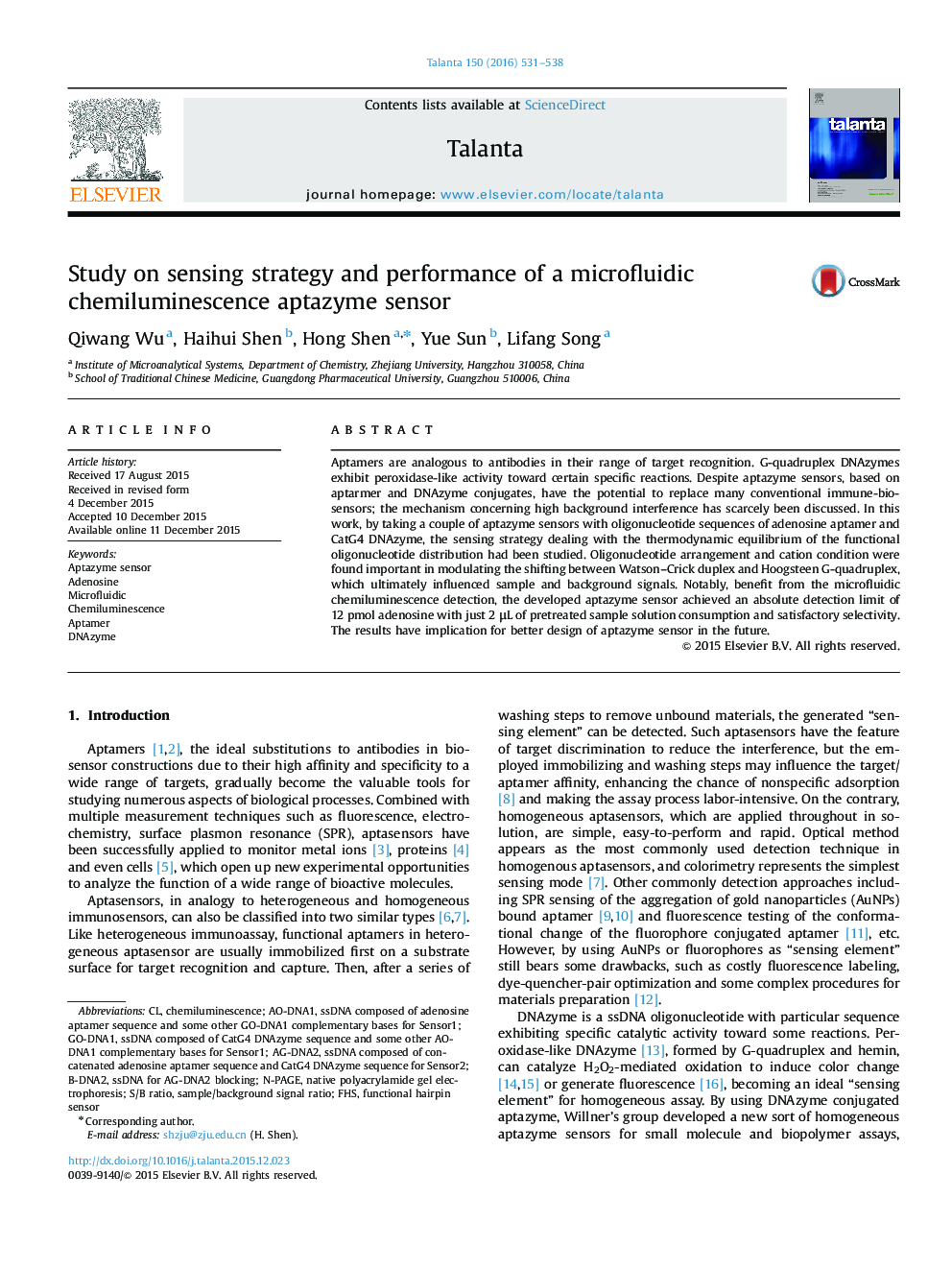| Article ID | Journal | Published Year | Pages | File Type |
|---|---|---|---|---|
| 1242203 | Talanta | 2016 | 8 Pages |
•Sensing strategy of aptasensor is studied on thermodynamic equilibrium consideration.•Both oligonucleotide arrangement and cation condition influence the S/B signal ratio.•Low LOD and small sample consumption achieved by using microfluidic CL assay.
Aptamers are analogous to antibodies in their range of target recognition. G-quadruplex DNAzymes exhibit peroxidase-like activity toward certain specific reactions. Despite aptazyme sensors, based on aptarmer and DNAzyme conjugates, have the potential to replace many conventional immune-biosensors; the mechanism concerning high background interference has scarcely been discussed. In this work, by taking a couple of aptazyme sensors with oligonucleotide sequences of adenosine aptamer and CatG4 DNAzyme, the sensing strategy dealing with the thermodynamic equilibrium of the functional oligonucleotide distribution had been studied. Oligonucleotide arrangement and cation condition were found important in modulating the shifting between Watson–Crick duplex and Hoogsteen G-quadruplex, which ultimately influenced sample and background signals. Notably, benefit from the microfluidic chemiluminescence detection, the developed aptazyme sensor achieved an absolute detection limit of 12 pmol adenosine with just 2 μL of pretreated sample solution consumption and satisfactory selectivity. The results have implication for better design of aptazyme sensor in the future.
Graphical abstractFigure optionsDownload full-size imageDownload as PowerPoint slide
